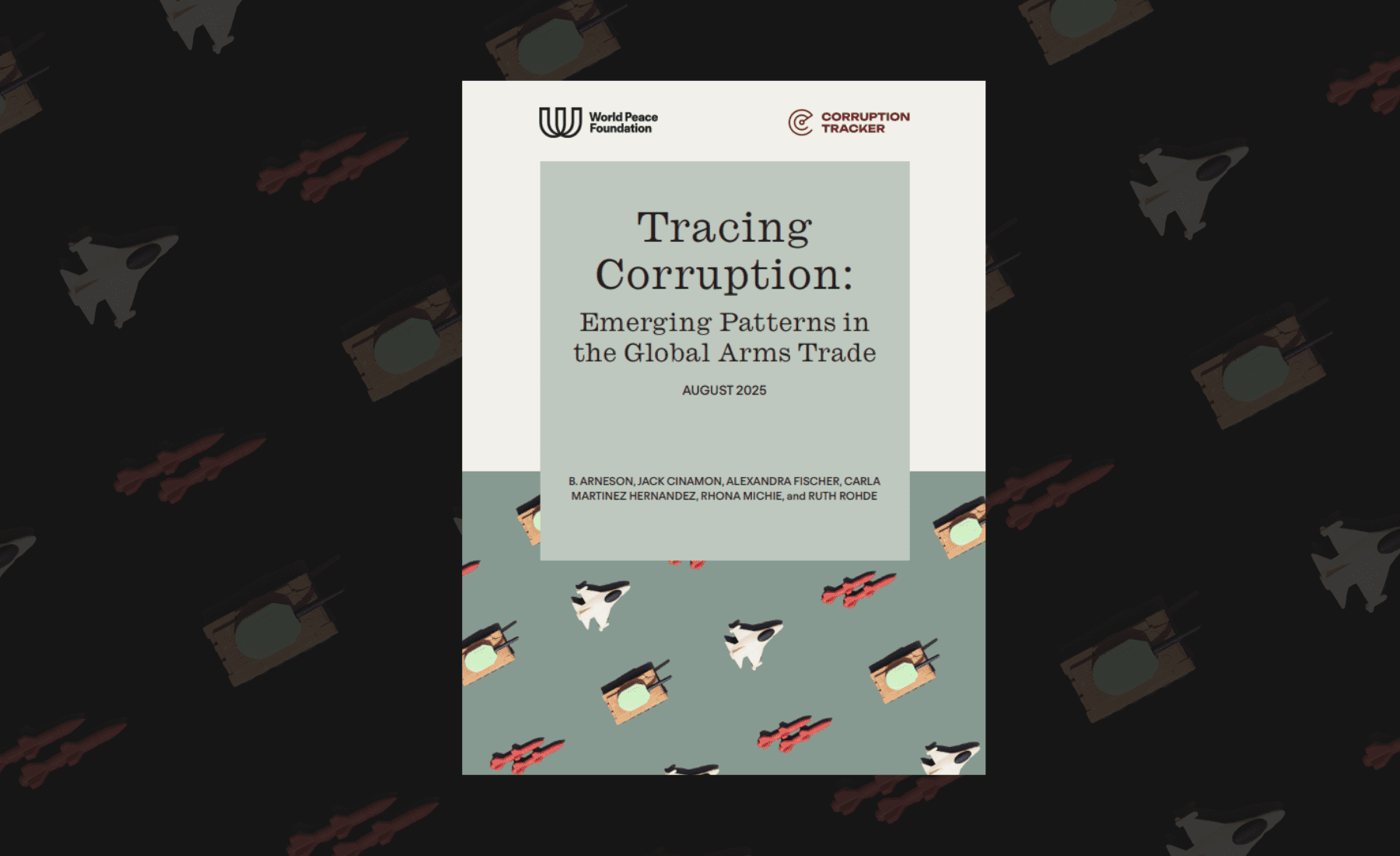The global arms trade is one of the most secretive and politically protected industries in the world, and one of the most corrupt. While headlines occasionally spotlight a bribery scandal or procurement controversy, the real story is far deeper: a web of systemic corruption that is both global in reach and hidden in plain sight.
Today, the World Peace Foundation and Corruption Tracker are proud to release Tracing Corruption: Emerging Patterns in the Global Arms Trade (August 2025), a report that analyzes 59 documented cases spanning 63 countries and 81 companies over the last 45 years.
Rather than treating corruption as a series of isolated incidents, this report identifies patterns that allow corruption to flourish. Through in-depth case studies and thematic analysis, the authors examine:
- Captured by Design: Rethinking Corruption in the Military-Industrial System (Rhona Michie) – Why conventional definitions of corruption fail to capture the realities of the military-industrial system, and how state capture offers a more accurate lens.
- Inflating Uselessness (Jack Cinamon and Carla Martinez Hernandez) – How wasteful, overpriced, and strategically irrelevant weapons projects drain public resources and normalize corrupt practices.
- Internationalization (Ruth Rohde) – The ways global expansion of the arms industry complicates accountability while creating new points of leverage for anti-corruption efforts.
- From Deferred Justice to Collective Power: Abolitionist Approaches to Arms Trade
- Corruption (B. Arneson and Alexandra Fischer)– How legal tools like Deferred Prosecution Agreements entrench corporate impunity, and why abolitionist approaches to accountability are urgently needed.
The findings are stark: corruption is not a side-effect of the arms trade, it is built into its very architecture. To confront it requires not only stronger oversight, but a reimagining of what accountability can look like in the face of entrenched corporate and state power.



